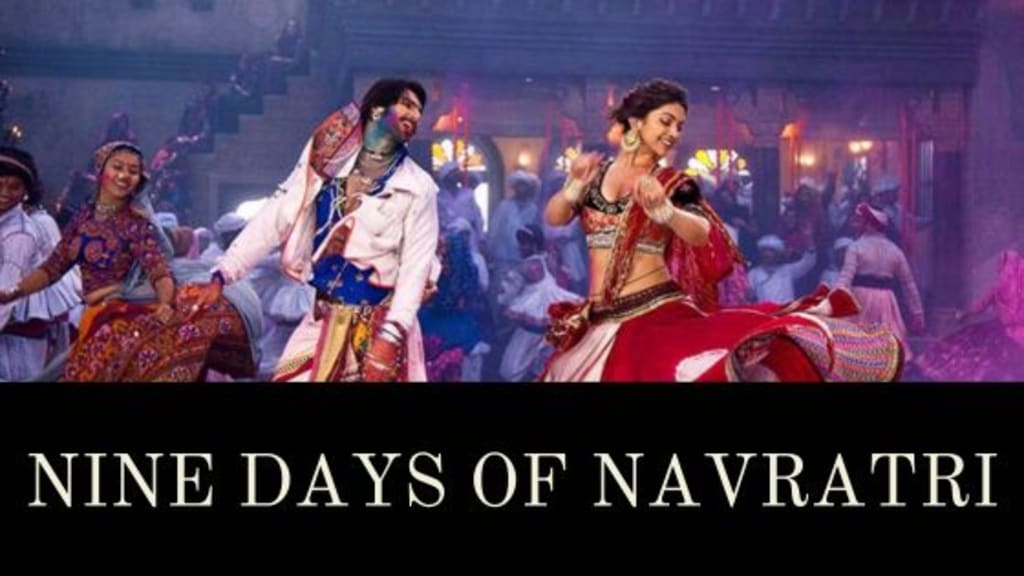Nine days of Navratri
All you need to know about Navratri!

Navratri:
Navratri is a Sanskrit word for ‘nine nights’ is a major Hindu festival held to worship and hail the divine Goddess Durga. Navratri is known by many names in different places. For example, eastern sites of India refer to it as ‘Durga Puja,’ ‘Sharad Navratri’ is the actual full name that is most commonly termed as Navratri. This auspicious festival is celebrated for nine days and often ends with Dussehra (another major Hindu festival) during the months of Ashvin (usually October-October). Navratri is celebrated all over India and mainly symbolizes feminine superiority as it is a festival for the Goddess Durga. Ladies fast for nine days for the welfare of their family, remove miseries from life, and worship feminine goddess Durga. Let’s look into the dates for Navratri 2020.
Why is Navratri celebrated:
Hinduism is the second name of festivity with numerous festivals that come around every year. One of the major festivals among them is Navratri. But do you know why Navratri is celebrated? Well, we are sure you do. But for those who don’t. Here is the reason why Navratri is celebrated.
As we mentioned before, Navratri means ‘nine nights’ and is celebrated to worship Goddess Durga. But unlike other festivals, why for nine nights and why for nine nights exactly. The main reason is that we worship goddess Durga for nine nights, dedicating each night for each of her divine forms, which includes goddess Saraswathi, goddess Kali, goddess Laxmi and as such. We will talk about all the nine days and their dedicated divine forms in our next section called ‘Nine days of Navratri.’ Navratri is celebrated twice a year, and each festival resembles the change in season. One before summer, usually in March and April and the other before winter, generally in September and October.
Goddess Durga is believed to be the ‘Supreme Energy of the Universe.’ The term ‘Durga’ basically means ‘the one who removes miseries.’ One of the main reasons why Navratri is celebrated is to remove all miseries from one’s life.
It is also believed in Hindu Mythology that Lord Rama (a divine form of Lord Vishnu) was the first to start this holy tradition of celebrating Navratri. He worshiped goddess Durga before he left for Lanka and emerged victorious on the tenth day, celebrated as Dussehra or Vijay Dashami, victory of good over evil.
These are the much-believed reasons as to why Navratri is celebrated.
Let’s take a look at nine days of Navratri.
Nine days of Navratri:
Navratri, unlike many other festivals in Hinduism, is celebrated for over nine days. Here is all you need to know about the nine days of Navratri and Navratri dates for 2020.
Day 1: Shailaputra
The first day of Navratri is associated with Shailaputri, which literally means ‘daughter of mountains’ is an incarnation of Goddess Parvati. The first day of Navratri is also known as Pratipada. Symbolic for the consort of Lord Shiva (One of the three supreme gods in Hinduism).
Day 2: Brahmacharini
The second day is associated with Goddess Brahmacharini, another incarnation of Goddess Parvati, her unmarried self. We worship Goddess Beahmacharini on this day. Symbolic for moksha (nirvana), peace, and prosperity.
Day 3: Chandraghanta
The third day in nine days of Navratri is dedicated to Chandraghanta. After marrying Lord Shiva (One of the three supreme gods in Hinduism), goddess Parvati embellished her forehead with a half-lit moon (Chandra). Therefore, the name ‘Chandraghanta.’ Symbolic for bravery and beauty.
Day 4: Kushmanda
The fourth day of Navratri's nine days is associated with Kushmanda, the creative power of the universe. It symbolizes the vegetation on earth.
Day 5: Skandmata
Skandmata is a form of Goddess Parvati that symbolizes the love and strength of a mother. The Goddess is worshipped on Panchami (5th day of Navratri).
Day 6: Katyayani
The 6th day in nine days of Navratri is dedicated to Katyayani, one of the incarnations of Goddess Durga is considered one of the most violent divine forms. Symbolic for courage.
Day 7: Kalaratri
Kalaratri is dedicated to the most feared forms of Goddess Durga, Goddess Kali. Goddess Durga took this form to end the demons Sumbha and Nisumbha. The Goddess turned her skin dark and was filled with a lot of rage. It symbolizes that Goddess Durga is also the one who finishes evil.
Day 8: Mahagauri
Mahagauri is the Goddess that is symbolic of peace and intelligence.
Day 9: Sidhidatri
The last or the 9th day in nine days of Navratri is dedicated to Goddess Saraswati or Sidhidatri. Symbolic for art and admiration towards nature.
These were the ‘nine days of Navratri’ with Navratri dates and the divine forms of Goddess Durga that they are dedicated to.
Navratri is a festival that is mainly focused on females, the males worship the Goddess and the females as a gesture of showing appreciation to their efforts and courage. On the other hand, females celebrate Navratri by keeping fasts or more commonly known as ‘vrit’ to worship the supreme Goddess. Let’s take a look at the full details about Navratri fasting.
Navratri fasting:
Navratri is celebrated by females in Hinduism by keeping a fast for the nine days in Navratri to worship Goddess Durga. They are only allowed to eat fruits or fruitful grains in their fast for nine days. We will share with you all the aspects and food items that are to be consumed and not consumed during these nine days in Navratri if they wish to keep Navratri fast. Navratri fasts are also a way to cleanse one’s body and show their love towards the supreme Goddess.
According to Ayurveda, fasting cleanses your body and also enhances the abilities of the digestive system. Therefore, Navratri fast is not just a way to worship Goddess Durga but also a therapy to cleanse one’s body.
About the Creator
Siddharth Thapa
Just a regular guy who loves to travel, read, and write.
Enjoyed the story? Support the Creator.
Subscribe for free to receive all their stories in your feed. You could also pledge your support or give them a one-off tip, letting them know you appreciate their work.






Comments (2)
NICE INFORMATION
VERY GOOD BROTHER